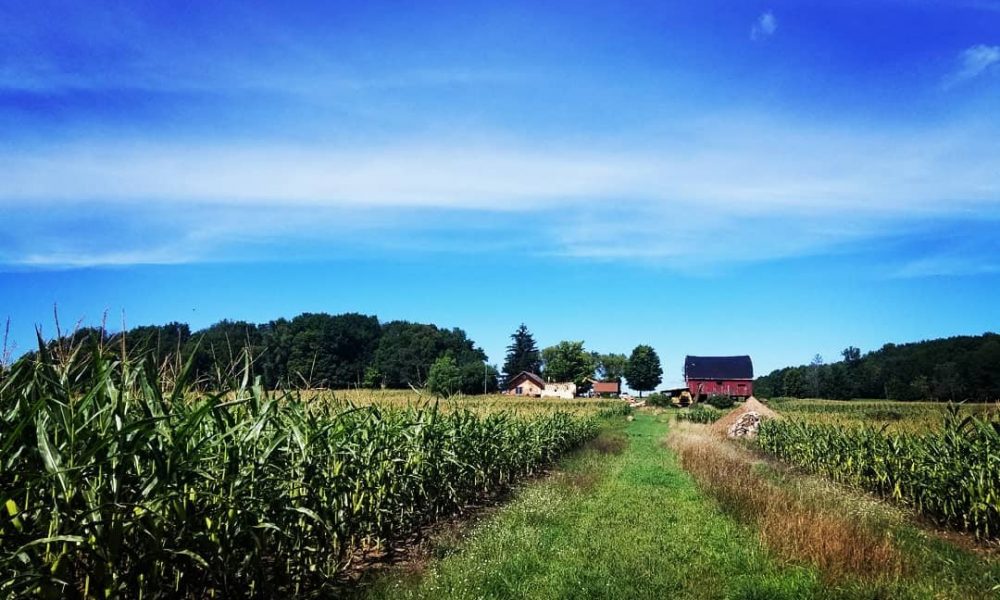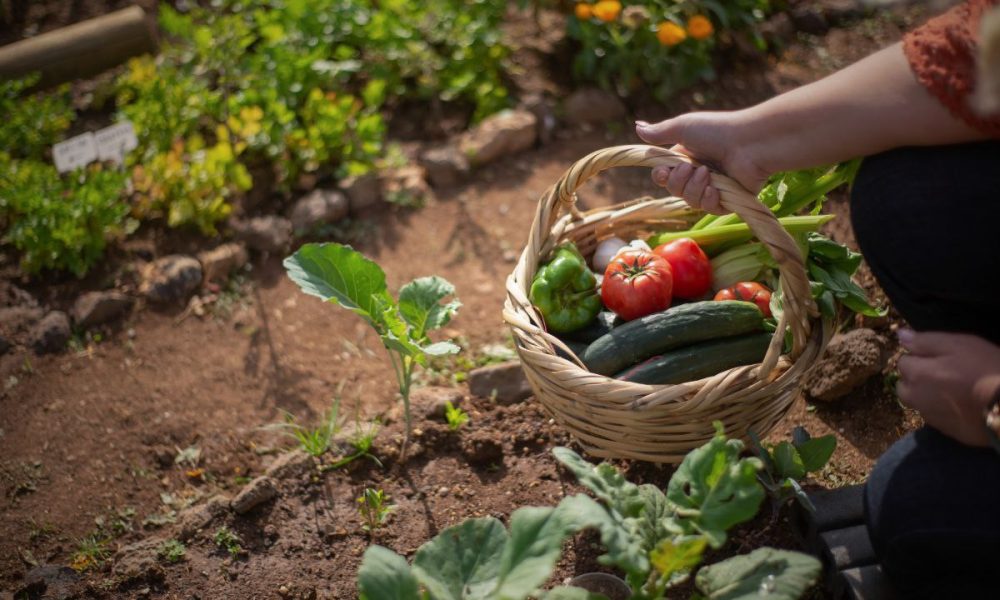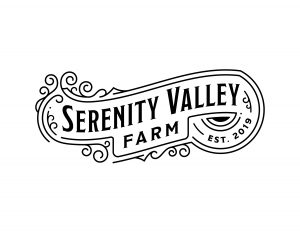 Good sun rising everyone! Birth Alchemy Bear here and I wanted to share a bit about the history and background of Serenity Valley Farm as well as our vision for the future! Western Ranger Bear and I met back in 2014, it was not love at first sight. That being said, it did become a great kind of love that comes from friendship.
Good sun rising everyone! Birth Alchemy Bear here and I wanted to share a bit about the history and background of Serenity Valley Farm as well as our vision for the future! Western Ranger Bear and I met back in 2014, it was not love at first sight. That being said, it did become a great kind of love that comes from friendship.
We got married in 2017. Through many talks about our future we realized there were three things that we found to be fundamental in our relationship and how we approached life. Most importantly was our relationship to God, and what He was asking us to do. The second thing that we both cared deeply about was having kids and raising a family on a piece of land. Lastly, we both are deeply passionate about truth and the freedom that it brings. It was not until just last year we boiled it down to God, Growth and Gravy! But that is the underlying passion that burns the candles here at Serenity Valley Farm and we would not be here if it were not for those specific desires of our hearts.
The land on which we live in Fremont Michigan was originally owned by my great grandpa Edward Lambert Gebben. 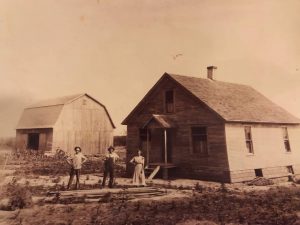 He is center in this picture flanked by his parents Albert and Alida Dunnwind Gebben. Edward was born in 1894 and was 25 years old when he cut down the trees which he milled to build this house and barn. The house was built in 1919.In 1924 Ester Helene was born to Gebben and his wife Lena Visscher. Ester was their first daughter and my grandmother. She was born right here in this house. I am hoping to homebirth (sooner rather than later! 40 weeks today!) and it really feels like coming full circle to be giving birth in the house which she was born in.
He is center in this picture flanked by his parents Albert and Alida Dunnwind Gebben. Edward was born in 1894 and was 25 years old when he cut down the trees which he milled to build this house and barn. The house was built in 1919.In 1924 Ester Helene was born to Gebben and his wife Lena Visscher. Ester was their first daughter and my grandmother. She was born right here in this house. I am hoping to homebirth (sooner rather than later! 40 weeks today!) and it really feels like coming full circle to be giving birth in the house which she was born in.
Edward Gebben was known for being a very fun and slightly wild individual. He worked with dynamite and during the Great Depression when food was running low he would cut off a piece of dynamite and throw it in the creek at the back of the farm. The explosion would bring a bunch of fresh fish to the table for a week or two and created a lot of really deep swimming spots in the creek. He also was rumoured to have blown up the bridge down the road from his house just for fun one time, allegedly. A very hard working man who loved his family, he passed down a love of the land and independent spirit that I got to benefit from through my grandma.
In this picture you can see Edward standing in front of the barn.
It has three floors, the first had two stalls, one for horses and one for cows. He kept about a hundred chickens on the second floor for his “egg route” where he delivered eggs in town. Third floor was for hay. He was an incredibly hard working man and had that indomitable spirit you can’t help but admire. He ended up selling the farm to a neighboring family in the 70’s. So while we purchased the property back in 2019 we cannot claim it is a centennial farm. So we just say it’s “nearly centennial.” Close enough.
The house had several additions and the barn needed some extensive work but for us it was a labor of love. For Western Ranger Bear and myself we wanted a place where we could raise our kids on the land. A place where we could host events and grow. This place has an energy that is hard to miss when you walk around. It’s a vibration and it’s a freshness. The only way to really know is to visit and walk the land. It’s a priority for us that everyone who comes to visit could walk away feeling blessed and refreshed.
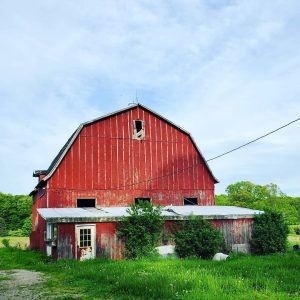
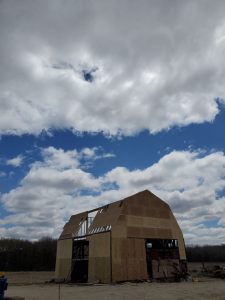
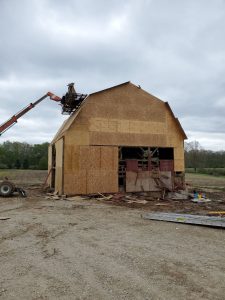
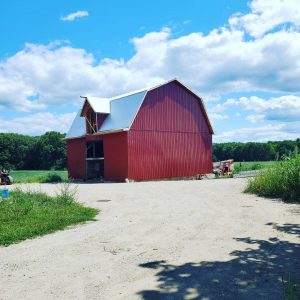
In these photos you can see where the barn was at and the extensive work we had to put into it to make it viable.
The roof had become so decrepit if we had left it another year it would have caved in. We are working on getting electric and water out to the barn to make it optimal for housing animals again. The third floor we are very excited about. We can’t wait to utilize it for events and gatherings! This barn has so much potential and it’s hard not to dream about all the things we could do. As all you homesteaders know, it’s not that you don’t have enough projects! It’s that you only got so much time!
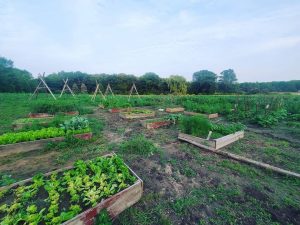
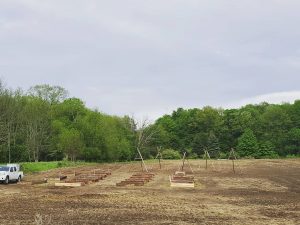
We have about 24 chickens here at SVF, our goal is to get goats and a milk cow. We are also working on getting and learning how to keep bees as well as working on turning our old basement into a root cellar which we can use for cold storage. We eventually would like to also build a smoke shack for smoking meat and cheese. This summer (2021) our biggest project was the garden. We had the ultimate builder buddie (Kit Kat Bear) agree to come stay with us and manage the garden when I was (am) super pregnant this summer. We built over 20 raised beds and planted over 100 different kinds of seeds and plants. We have learned so much this summer! We have learned about what grows well in our soil; what needs more care; pest control; and have prayed for rain a lot! As anyone growing plants knows you have to stay flexible. That was a big lesson for us this summer. From managing expectations and disappointments, equipment failure and communication issues we have all risen up to the challenges and are applying what we have learned to crush harder next year!

A big part of the garden work and stepping towards self sustainability was selling at the Newaygo Farmers Market this summer. We made some great connections with local farmers and craftsmen/women as well as made some extra funds. In the spring we focused primarily on baked goods because our produce had not really started producing yet. There was a wealth of knowledge to gain from the other farmers there and I definitely feel like it was a great way to meet local people who are also working on homesteading! We will definitely continue to sell at markets next summer, and hopefully increase our area by selling at multiple markets. Our produce now is going towards canning and preserving for winter for our family. We also tried to do a road side stand but after our free range chickens ate the produce we had out I decided that we would try that next year after we get a more solidified coop area. 

Western Ranger Bear and I have so many ideas and things we would love to see happen here at Serenity 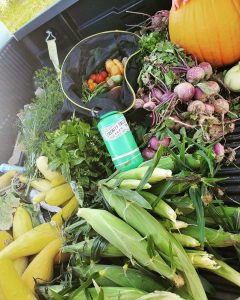 Valley. When we talk about the future it’s not just that we become self sustainable but that we are able to help the community in which we live. Making our garden big enough to help those in need and to help teach people who want to learn. We want to have a campground in the back by the woods for people who want to stay and try out living off the land. We want to be able to host classes and maybe even a homeschool co-op in the future.We want to build a life that our kids will really flourish in and be set up for success. More than any of that, we want to keep our hearts and minds open to whatever God is asking of us, because we believe that whatever He asks us to do will be even better than what we could imagine. So here is to whatever that is, whatever the goal, whatever the challenge we will continue to crush! More God, more growth and more gravy!
Valley. When we talk about the future it’s not just that we become self sustainable but that we are able to help the community in which we live. Making our garden big enough to help those in need and to help teach people who want to learn. We want to have a campground in the back by the woods for people who want to stay and try out living off the land. We want to be able to host classes and maybe even a homeschool co-op in the future.We want to build a life that our kids will really flourish in and be set up for success. More than any of that, we want to keep our hearts and minds open to whatever God is asking of us, because we believe that whatever He asks us to do will be even better than what we could imagine. So here is to whatever that is, whatever the goal, whatever the challenge we will continue to crush! More God, more growth and more gravy!

